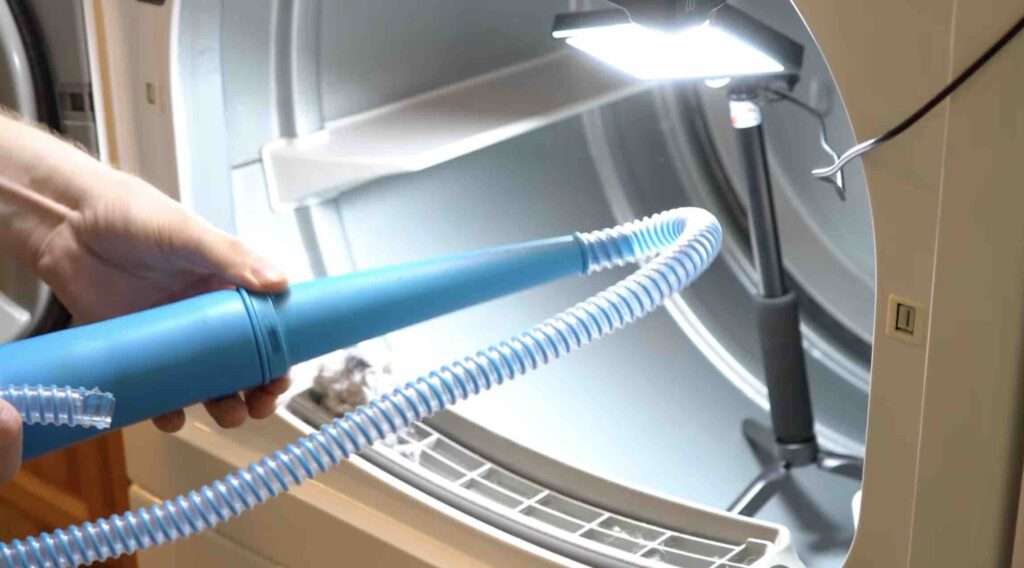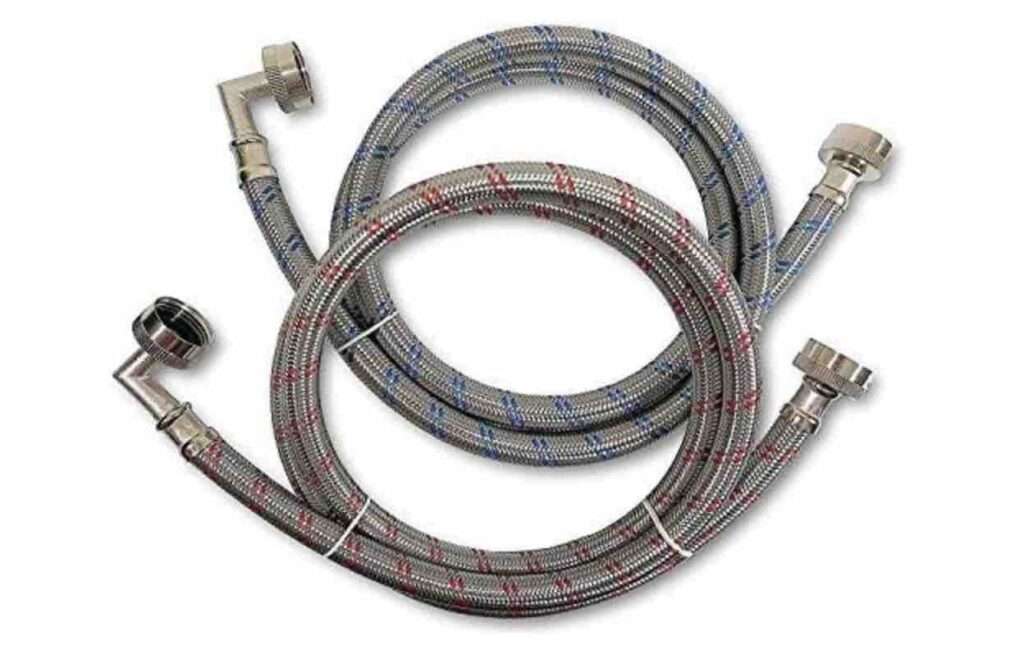Last updated on July 1st, 2023 at 06:33 am
It’s a good idea to pay attention when someone tells you that a cheap appliance could save your life. Unfortunately, many people disregard this sound advice and neglect to install smoke and carbon monoxide detectors in their homes.
Both of these technologies help people live longer lives in different ways. Smoke detectors warn you that there is smoke and maybe a fire in your home. Carbon monoxide detectors warn you when carbon monoxide levels are dangerously high.
Why does a smoke detector matter?
Because they believe fire is obvious, some people disregard the smoke alarm. You will eventually smell the smoke or see the flames, even if the fire burns inside the walls or on a different house floor.
This claim is correct, but those who make it are unaware that fire victims are more likely to die from smoke inhalation than from heat or flames. If you’re sleeping and a fire breaks out, you may die from smoke inhalation without even realizing it.
Carbon monoxide is deadly similarly, although it is hard to detect without a detector. Carbon monoxide poisoning causes dizziness, nausea, shortness of breath, weakness, and confusion in the early stages.
Your vision may become blurry, and you may eventually lose consciousness. Carbon monoxide replaces oxygen in your blood, giving a harmful chemical to your cells instead of oxygen.
This causes these symptoms. Carbon monoxide, unlike fire, has no odor, color, or taste, so you won’t know it’s there until it’s too late.
Keynotes in this article
- On a smoke detector, where is the reset button?
- What are the signs that a carbon monoxide detector has detected carbon monoxide?
- How to shut off a carbon monoxide detector
- What is the recommended number of carbon monoxide detectors?
- What does a carbon monoxide detector sound like?
- Conclusion
On a smoke detector, where is the reset button?
Remove the smoke detector from its ceiling mounting bracket and disconnect the smoke detector’s power cable. Remove the battery, then press and hold the test button for 15 seconds. An alert will ring for a few seconds before going silent.
It’s also important to know how to reset a fire alarm.
Many homeowners have a typical issue when their alarm continues to beep even though they have replaced the battery. If the alarm is still beeping after changing the batteries and turning off the power via the breaker, the system may need to be reset.
That is why, to troubleshoot smoke detectors on your own, you must know how to reset them. Once you’ve figured out how to reset the device, you can rule out the possibility that the battery is the issue.
Most alarm clocks have a red reset button that you can press for 15 to 20 seconds to see if it works. Certain fault circumstances, such as a weak or low battery, are stored in the processors of some smoke alarms.
This faulty situation should reset when the battery is changed, however, it doesn’t always happen, necessitating a manual reset. To learn how to reset a smoke detector, follow the instructions below:
For Battery-Backup Electric Smoke Detectors:
- To switch off the electrical, turn off the primary breaker in your home’s breaker box.
- Following that, remove the smoke detector from its ceiling mounting bracket and unplug the smoke detector’s power cable.
- After removing the battery, press the Test button. Hold it in place for 15 seconds. An alert will ring for a few seconds before going silent.
- Finally, replace the smoke detector’s battery, reconnect the power line, and reinstall the smoke detector on its mounting bracket. The detector will beep once when you turn on the breaker to signal that power has been restored to the unit.
For Smoke Detectors with a Battery:
- First, take out the smoke detector’s battery.
- Then press and hold the Test button for around 15 seconds. The alarm will sound for a few seconds before stopping. If the smoke detector has a blinking red light, you can also push the Test, Silence, or Hush button to reset it.
- Finally, replace the smoke detector’s battery. When the battery is attached, the detector will chirp once.
What are the signs that a carbon monoxide detector has detected carbon monoxide?
Smoke detectors work in two ways to detect smoke. Photoelectric detection, for example, employs a light sensor that activates an alert when smoke particles interrupt the light beam. On the other hand, Ionization detectors convey a little electrical current from one diode to the next. When smoke particles impede the electrical current, these sirens sound. Some of the more recent smoke alarms can also detect heat.
There are three ways that carbon monoxide detectors work. When carbon monoxide is absorbed, a gel in biomimetic sensors changes color. The carbon monoxide detector monitors the gel’s color, which sounds an alarm if it changes.
A metal-oxide-semiconductor is used in other detectors. This semiconductor, which looks like chips on an electronic circuit board and contains silica, is sensitive to carbon monoxide.
When the gas is detected, the quantity of current passing through the detector is reduced, causing the alarm to sound. An electrochemical sensor is the final option. Small electrodes are immersed in a chemical solution that changes when exposed to carbon monoxide, and these detectors emit an alert when they detect this change.
How to shut off a carbon monoxide detector
The steps to turn off your carbon monoxide detector are outlined here. This also applies to halting the chirping of your smoke detectors.
1. Attempt to reset the fire alarm.
You can attempt the methods listed below to reset your alarm. The previous methods are still valid and should be tried before replacing your detector or switching to a different model.
- To turn off the power to your detector, use your circuit breaker.
- Before disassembling the smoke alarm, disconnect and detach it from its bracket.
- Remove the battery from a detector that is powered by batteries.
- Without the battery in place, press and hold the test button for around 20 seconds.
- Reconnect the power source and replace the battery.
- To restore the detector’s power source, re-energize the circuit breaker.
- Replace the mounting bracket on your detector.
If the false alert continues after the detector is reset, it should beep to confirm that it is working properly; otherwise, replace the batteries.
2. Purchase a New Fire Alarm
A carbon monoxide detector is not indestructible. It has an expiration date, and the entire unit must be replaced once that date passes. After ten years of use, this usually happens. If you’ve tried everything suggested here and still can’t get your carbon monoxide detector to turn off, it’s time to replace it.
3. Model for use in a stand-alone (DC) environment
- Take out the batteries.
- Press and hold the silent button for 10-15 seconds or until the beeping stops.
- Replace the batteries, which will result in a brief beep, indicating that the detector is working properly
4. Make sure your smoke alarm is clean.
When you’ve ruled out the battery as the reason for your chirping alarm by testing it without one, dust could be the culprit. Make sure the chambers are dust-free using a vacuum cleaner or a blower.
Cobwebs and insects could potentially be the source of the problem, so make sure to eliminate them.
5. A model with a hardwired (AC) power supply
- Remove the gadget from the power source or turn off the circuit breaker that controls the alarm’s electricity.
- Battery backups should be removed.
- Hold the silent button for 20 seconds or until the alarm goes off.
- Replace the batteries, reconnect the circuit, and turn the circuit breaker on.
6. Batteries should be replaced.
If the preceding method didn’t work, try replacing the battery in your smoke detector. Some detectors will require batteries to be replaced every six months or so. Any period longer than that could lead to false alarms.
Make sure the new battery is placed correctly and has the same voltage as the old one when replacing it. You will not be able to address the problem if you do one of them incorrectly.
7. Use the Silence button to see if it works.
You can press the test button with and without the device’s battery installed. This will provide you with a clear picture of what’s triggering the false alarm. It’s worth noting that the test button may be mistakenly pressed, and the alarm may continue to beep from time to time. If this method fails to produce the desired results, you can try disconnecting the battery and testing it without it.
What is the recommended number of carbon monoxide detectors?
Several factors will influence the amount of carbon monoxide (CO) detectors required in your home. You’ll need to think about the size of your house and how many bedrooms you have.
It’s fairly typical for homeowners to install carbon monoxide detectors incorrectly, so be sure you follow the manufacturer’s instructions.
Total Home Protection with Carbon Monoxide detector
You’ll need a detector for each floor of the house at the absolute least. Because you may have appliances in the basement, such as a furnace or gas dryer, this also applies to the basement. The Consumer Product Safety Commission (CPSC) of the United States advises the following for bedrooms:
Shape
CO alarms should be installed on every level of the house and in sleeping spaces outside. Smoke detectors should be installed on every floor of the house, as well as outside sleeping quarters and within each bedroom. Conversely, the CPSC does not advocate installing carbon monoxide detectors in a home’s attic.
A carbon monoxide detector can also be placed near an attached garage, but it’s crucial to understand the difference between carbon monoxide and carbon dioxide. Vehicles in the garage can emit hazardous substances that can seep into the house.
Keynote
Always err on the side of caution if you’re unsure whether or not you need an alarm at a specific location. Purchase an extra CO detector if possible, as the comfort of mind may be worth the extra cost. Keep in mind that a carbon monoxide detector will be installed at a different level than a smoke detector. Because heat rises, smoke detectors are usually installed on the ceiling.
Carbon monoxide reacts with the oxygen in the air. Because you’re most vulnerable to carbon monoxide poisoning when sleeping, placing them level with your bed is a good idea. Set it higher on the wall, at eye level, if you have children who could be intrigued about the detector.
Locations to Avoid
Carbon monoxide detectors in some sections of the house may give erroneous readings. A carbon monoxide detector should not be installed in any of the following areas:
- Bathrooms
- In addition to heating devices
- In the vicinity of fireplaces
- In addition to open windows
Although a carbon monoxide detector should be placed in the approximate vicinity of a fossil-fuel-burning appliance, it should still be at least 15 feet away. To avoid any faults, you should keep the detectors out of reach of youngsters.
What does a carbon monoxide detector sound like?
If your smoke, carbon monoxide, or combination detector goes off and you don’t test it, it alerts you to a potentially dangerous condition that must be addressed immediately.
Ascertain that everyone in your home is aware of the sound of your smoke and CO alarms and what to do if they are activated.
3 loud beeps, repeating emergency smoke alarm
The alarm will beep three (3) times in a loud, repetitive sequence when it detects smoke in your home. At 85 decibels, the First Alert alarm sequences are exceptionally loud. Even sleeping persons will be alerted to emergencies thanks to this industry-standard alarm setting.
4 loud sounds, recurring emergency carbon monoxide (CO) alarm
Your alarm will sound four (4) times in a loud, repeated sequence when there is a high carbon monoxide level. At 85 decibels, the First Alert alarm sequences are exceptionally loud. Even sleeping persons will be alerted to emergencies thanks to this industry-standard alarm setting.
Conclusion
Smoke and carbon monoxide alarms should be tested at least once a month, but once a week is advised. Batteries should be changed every two years (we recommend when clocks are changed for daylight savings time).
Most smoke and CO alarms are expected to last ten years. However, we recommend replacing them after five to seven years to check how they are doing. If you bought an older house and didn’t know how old the smoke and carbon units are, replace them completely.

Uchenna is a Radiographer and Auto parts mechanic who recently got his automotive diploma as an auto repair technician, and since then, has worked on fixing various car problems.
Working as just a radiographer, Uchenna didn’t just get all the fulfillment he desired, because he truly loved doing things tilted toward cars. As a kid, he would take apart his toy cars to see how they worked and would spend hours tinkering with his bike.
So, in 2017 he made the tough decision to become an auto mechanic. He threw himself into his studies and now loves every aspect of what he does.
He gets to work with his hands, solving problems and bringing cars back to life, and sharing his knowledge and easy quick-fix guide online are all part of what makes him feel fulfilled.



